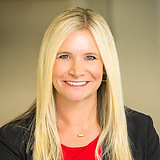By: Lyndsey Barnett and Michaela Taylor*
As we have mentioned in previous insights, SECURE 2.0 has provided several opportunities for plan administrators to assist participants in tackling emergency expenses. Two of these provisions updated the administration of hardship withdrawals to plan participants.
Previously, the IRS permitted self-certification for hardship distributions, but it was the responsibility of the plan to obtain any records or evidence needed to prove compliance if the validity of the distribution was challenged. Therefore, some plan administrators and recordkeepers were hesitant to permit self-certification. For plan years beginning on or after December 29, 2022, plan administrators may rely on certification by a participant that they have met the requirements for a 401(k) or 403(b) plan hardship distribution without this extra documentation.
The employee’s written self-certification must state that circumstances for the hardship exist, the amount requested is not more than the amount required to satisfy the financial need, and the employee has no alternative means to satisfy such need. However, the withdrawal should be denied if the plan administrator has actual knowledge the information on the employee’s certification is not accurate. These changes are optional and are effective for calendar year plans now.
SECURE 2.0 also allows provides similar reliance for plan administrators on an employee’s written certification for participants taking a withdrawal due to an unforeseeable emergency in a 457(b) plan. Like the requirements for 401(k) and 403(b) plans, the certification must state that the participant faces an unforeseeable emergency and that the requested amount is not greater than the emergency need.
In addition, SECURE 2.0 now more closely aligns the 403(b) hardship withdrawal rules with the rules for 401(k) plans. In 2018, the Bipartisan Budget Act (BBA) expanded the hardship rules for 401(k) plans to permit hardship withdrawals of QNECs, QMACs and earnings on these contributions and elective deferrals (see our prior post here). The BBA also provided that participants no longer had to take a loan for their 401(k) plan before taking a hardship. SECURE 2.0 extends these provisions to section 403(b) plans for plan years beginning on or after December 31, 2023.
The IRS is expected to issue further guidance on these rules. If you have any questions about this or any portion of SECURE 2.0, please contact any of Graydon’s Employee Benefits team.


